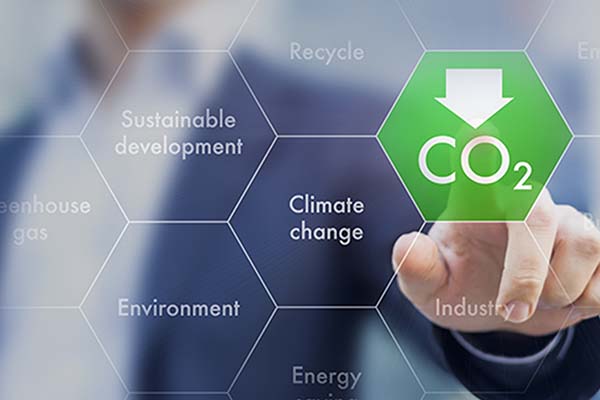Lifecycle assessment (LCA) and Environmental Product Declaration (EPD) in the building industry evaluates the environmental impacts of a building throughout its entire lifecycle. Some HVAC manufacturers, including Swegon, have started to develop EPDs for their products. In this text we will share some insights from our journey thus far.
Lifecycle assessment in a nutshell
Simply put, a lifecycle assessment in the building industry evaluates the environmental impacts throughout the entire lifecycle of a building, including upstream and downstream processes associated with construction, operation, and demolition. It is an aggregation of positive and negative environmental impacts of the associated building products, materials and services involved in the lifecycle of a building. As HVAC solutions often are responsible for a significant share of a building’s carbon footprint over its lifecycle, it might be time to have a closer look.
LCA and EPD intensify the competition in the HVAC industry
Building material manufacturers are increasingly improving their ability to provide details on the environmental performance of their product in the shape of an EPD. Unfortunately though, within the HVAC industry there are not many companies who have engaged in this field yet.
However, this is about to change due to the fact that countries are getting closer to implementing national legislation regarding the environmental performance of buildings. Sweden, for example, is pursuing a so-called climate declaration for new buildings starting from 2022. This climate declaration shall present the environmental impacts of a building. But only building materials in the construction phase are initially considered and HVAC installations are excluded. However, recommendations to this legislation indicate towards including them from 2027 - at the latest. There are multiple companies and organizations who favour an earlier inclusion.
Only a matter of time?
Until now, the most important factors of HVAC solutions have been the technical functionalities and the price. There is a good reason to believe that soon the environmental performance of HVAC products based on LCA results will become more relevant and visible. Based on Swegon´s customer reach, we see a significant interest in EPDs for HVAC products from pioneering organisations and individuals across most markets such as the UK and the Nordic countries. Implementing a lifecycle assessment is a good start in understanding the environmental challenges of customers and making it easier for them to meet their environmental targets.
LCA Insights from our finished EPDs
Swegon has during 2021 released EPDs for diffusors, connection boxes, comfort modules, and attenuators, and has gathered valuable experience along the way. Our LCAs include materials, production, transport, and demolition and they show that the choice of material has a great influence for the environmental impact of the product. For example, the production of new metals are very resource intense and we have seen that metals such as steel sheet and aluminium have a major share of the total environmental impact in the LCA of a product. However, if one uses non-virgin metals instead of new, the environmental impact is significantly smaller.
Another key factor of the environmental impact of the product is the geographical location of the production of the product. One area that is a significant contributor in the geographical aspect is the electricity mix in the market and used in the production. It is clear that electricity from renewable and fossil free sources has no significant share of a product’s environmental impact while an electricity mix from non-renewable and fossil based sources can take on a significant share.
Thoughts to explore moving forward
With the great impact of new materials and the increasing customer demand for environmentally high-performing products and solutions, it is interesting to explore the possibilities in this area. We see an increasing interest in circularity within HVAC products. As we have seen in our LCA work, the use of non-virgin materials can have a great environmental impact. There are possibilities both regarding materials and reusage of whole product or components. It is clear that a circular mindset would change the environmental impact of the HVAC installations. So, going from words to action, how could the circular aspect be implemented in HVAC design as well as product and system development? One of Swegon’s new offers in line with this is an upgrade package for the GOLD air handling unit. It has been very appreciated from our customers and you can read more about when an upgrade was made at Hovåsskolan outside of Gothenburg here.





-Aug-16-2023-12-30-41-3641-PM.png?width=75&name=MicrosoftTeams-image%20(3)-Aug-16-2023-12-30-41-3641-PM.png)






.jpg?width=75&name=sigvardsson_220628_0008_small_webb%20(1).jpg)












.jpg?width=75&name=magnus%20andersson_550x550%20(1).jpg)











-4.png?width=75&name=MicrosoftTeams-image%20(3)-4.png)











